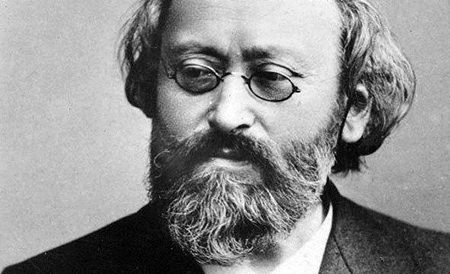
I played Max Bruch’s first violin concerto when I was fourteen. Not the solo violin part you understand, because I cannot play the violin. No, I was a spotty teenage cellist and a rather inexperienced one at that, sitting at the back of the cello section of our local youth orchestra. But the concerto had a lasting impression.
Bruch actually wrote three violin concertos as well as several other pieces for violin and orchestra. It’s always seemed to me that he’s one of those composers who really aren’t fully appreciated. In his day he was known for choral music, but he also wrote many orchestral works including three symphonies, his first at the age of fourteen. In later years he completed four operas, several concertos and a fair amount of chamber music including some string quartets. Sadly, these days, you hardly hear any of his music.
Bruch’s Scottish Fantasy was completed in 1880 and he dedicated it to the legendary virtuoso violinist Pablo de Sarasate. It’s a violin concerto in all but name, though I suppose it’s better described as a four-movement fantasy on Scottish folk melodies. Despite the fact that Bruch never visited Scotland, the work uses genuine Scottish folk songs and it was given its first performance in Liverpool in 1881 with Bruch himself conducting. The soloist was the distinguished violinist Joseph Joachim, but Bruch was unhappy with Joachim’s playing and accused him of “ruining” the performance. History does not record what acidic comments must have been exchanged.
It’s quite coincidental that these two works – both inspired by Scotland and written by two German composers – are played by two orchestras from Galicia, which in case you had forgotten, is up in the extreme north-west corner of Spain on the Atlantic coast.
This is one of several pieces by Bruch which are still widely performed today, along with his first violin concerto and the Kol Nidrei for cello and orchestra. Unusually, Bruch gives the harp a prominent role and in this superb recording the harp is placed well forward so that it can actually be heard. On some other recordings it is almost inaudible.
The work begins quietly with sustained chords on the brass but the mood gradually livens up and you might even recognise some of the melodies, especially the one that kicks off the sizzling last movement.
This excellent performance is given by the Symphony Orchestra of Galicia conducted by Rumon Gamba, who despite his foreign-sounding name, is a very successful English conductor of the younger generation known for his interest in new music and classic film scores. But the star of the show is undoubtedly the brilliant violinist, 29-year-old Stefan Jackiw. He was born in Boston, Massachusetts to a Korean mother and a Ukrainian father. The Washington Post recently described him as having “talent that’s off the scale” and The Boston Globe described his playing as “striking for its intelligence and sensitivity”.
Stefan Jackiw has appeared as soloist with the world’s top orchestras and conductors and is much in demand. His stunning performance of Mendelssohn’s Violin Concerto with the YouTube Symphony Orchestra at Sydney Opera House was evidently watched by more than 30 million people worldwide.
Unlike Bruch, Felix Mendelssohn actually went to Scotland on an extensive walking tour as part of his first visit to Britain in 1829. Scotland must have had quite an impression on the composer because it also inspired The Hebrides overture, sometimes known less elegantly as Fingal’s Cave. After this was completed he started sketches for the symphony, although progress on the work was difficult, so much so that he left it for ten years and didn’t complete it until 1842. Oddly enough, although it was the fifth and final symphony to be completed by Mendelssohn, it was the third to be published and has subsequently been known as Symphony No. 3.
It has an imposing first movement and unusually the second movement (at 15:49) is a fast one with a lovely, sunny theme which may strike you as familiar. This movement is meticulously played with splendid precision and articulation, especially by the brass. The last movement draws ideas from Scottish dance although unlike Bruch’s Scottish Fantasy, no genuine Scottish folk songs have been identified.
The Youth Symphony Orchestra of Galicia is in splendid form and the performance is directed by the orchestra’s leader. But because the work requires a relatively small number of players, a conductor is not entirely necessary. Even so, it’s a bit disconcerting to see an empty space where the conductor usually stands.
 |
 |
 |





